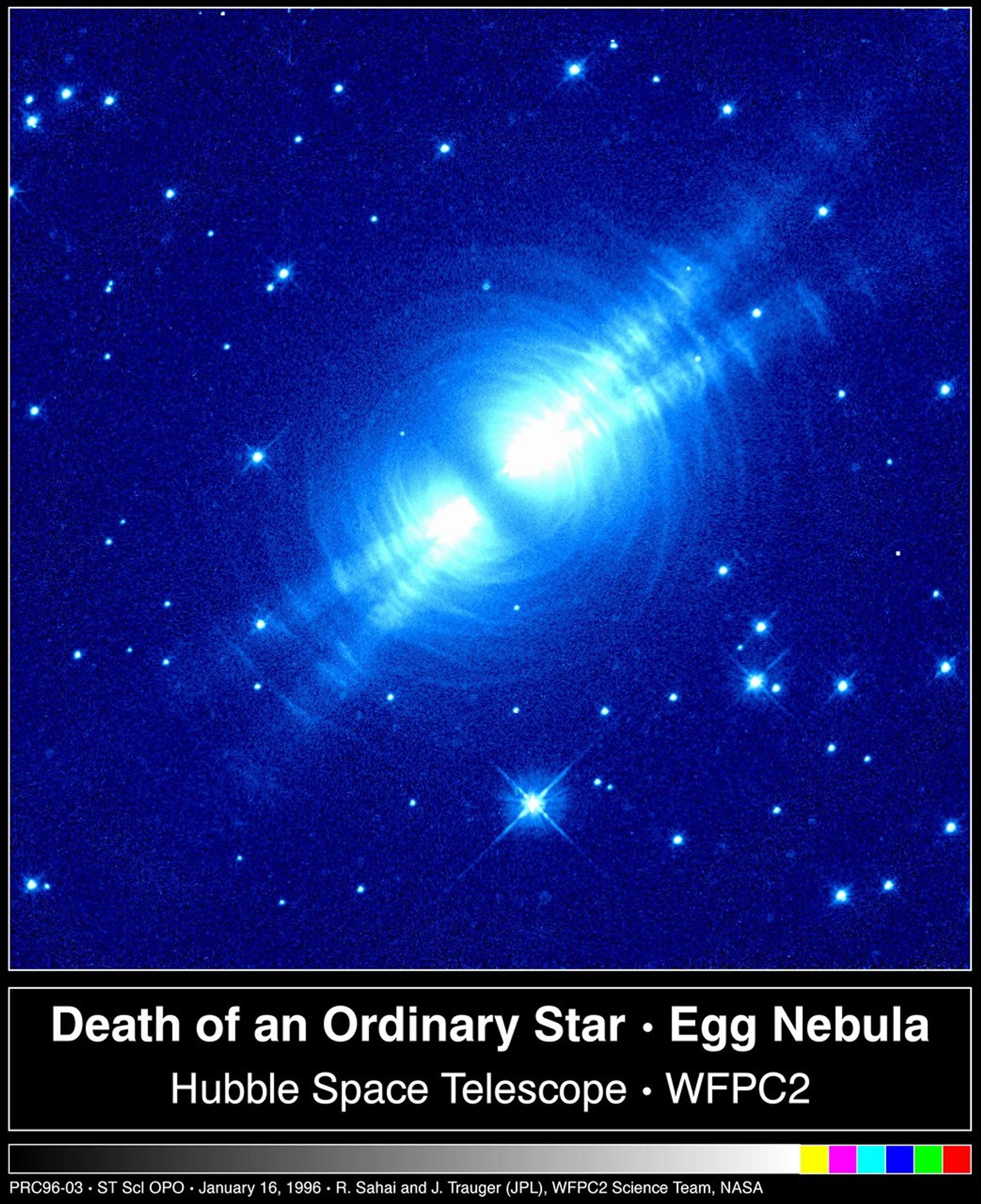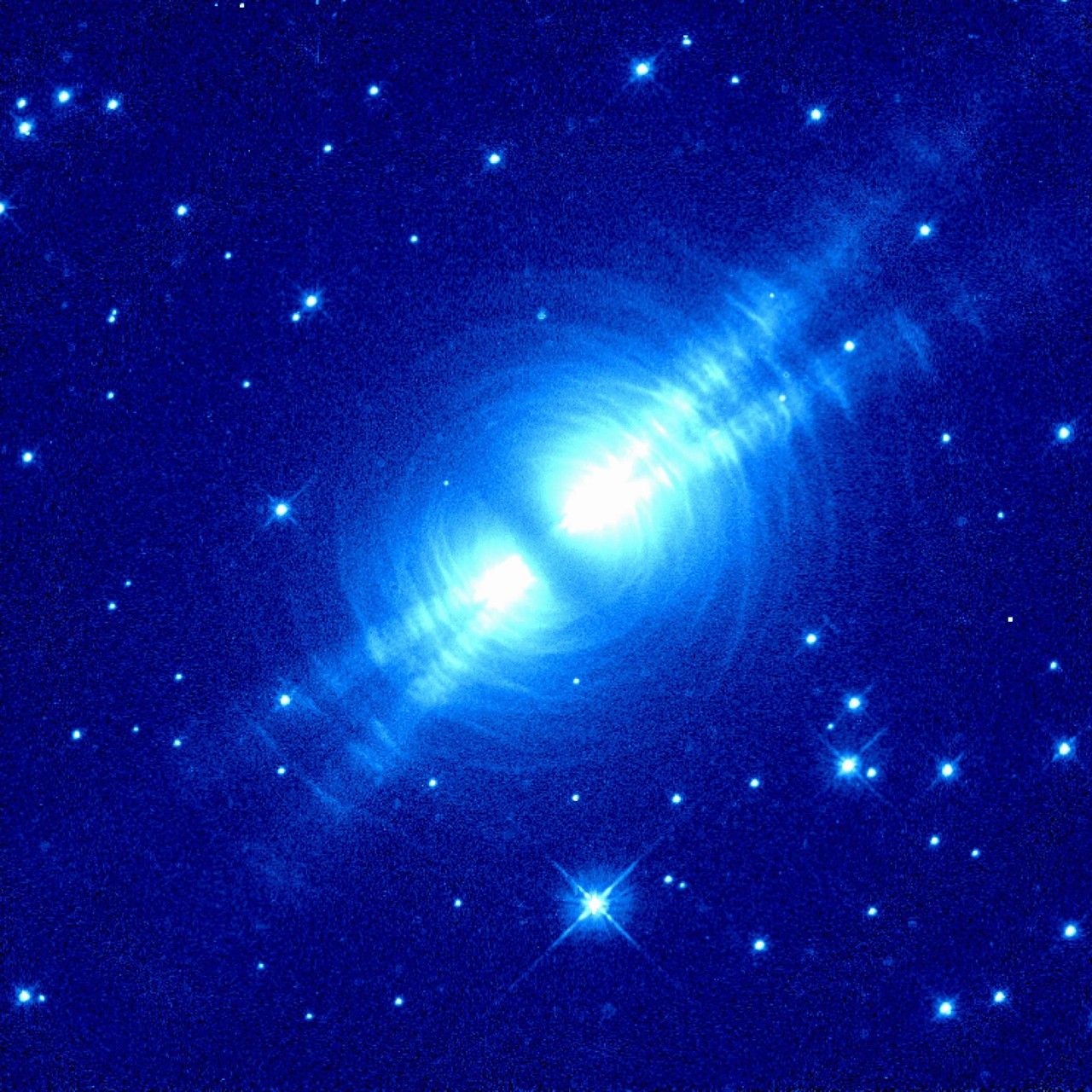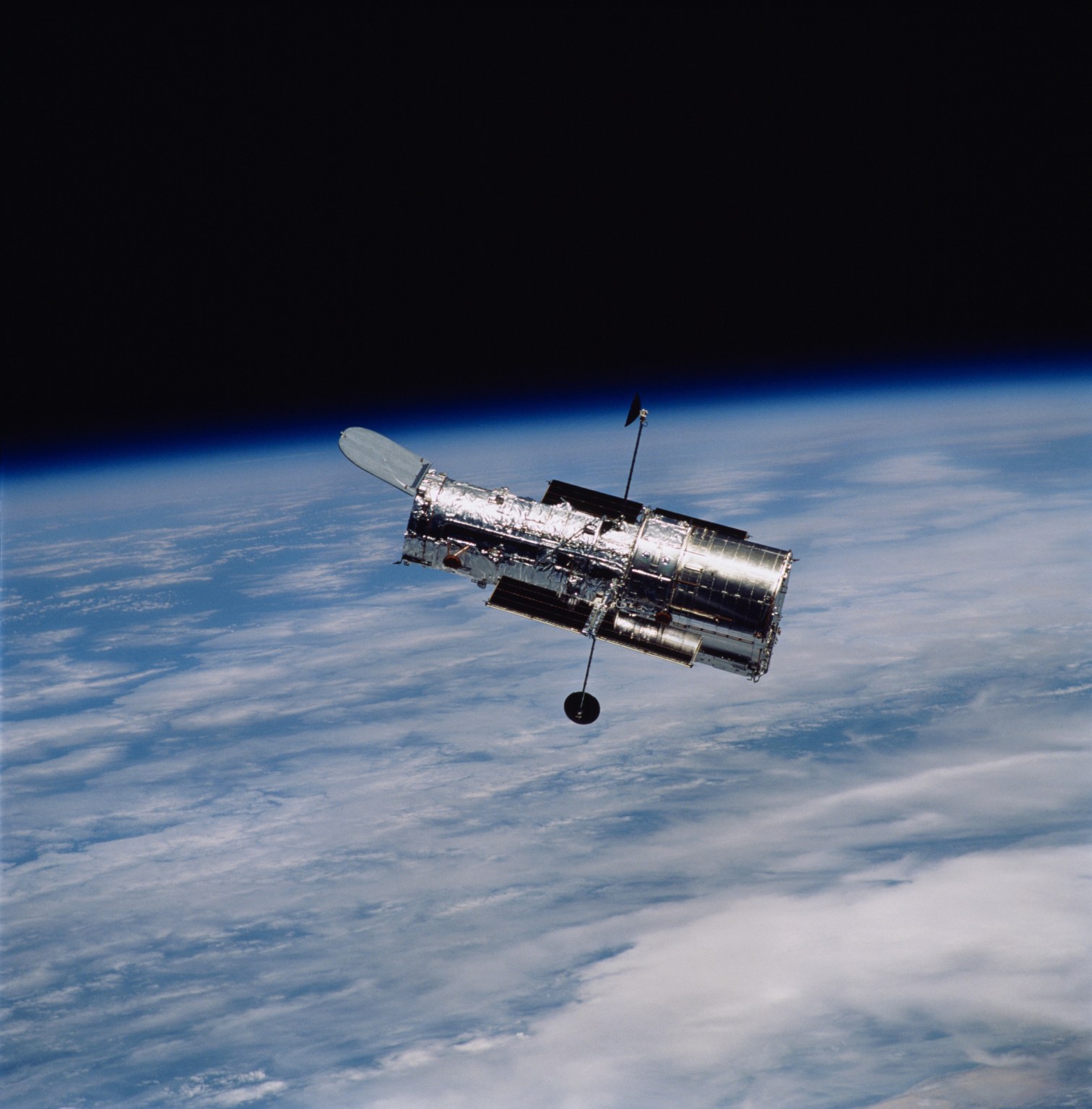This Hubble telescope picture of the Egg Nebula, also known as CRL2688, shows a pair of mysterious "searchlight" beams emerging from a hidden star and criss-crossed by numerous bright arcs. This image sheds new light on the poorly understood ejection of stellar matter that accompanies the slow death of Sun-like stars. The nebula is really a large cloud of dust and gas ejected by the star, expanding at a speed of 115,000 mph (20 km/s).
A dense cocoon of dust [the dark band in the center] enshrouds the star and hides it from our view. Starlight escapes more easily in directions where the cocoon is thinner and is reflected towards us by dust particles in the cloud, giving it its overall appearance. Objects like CRL2688 are rare because they are in a very short evolutionary phase. However, they may hold the key to our understanding of how red giant stars transform themselves into planetary nebulae, the glowing remnants of dying stars.
































